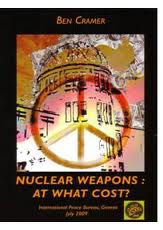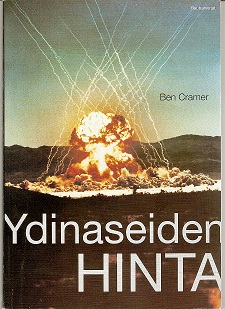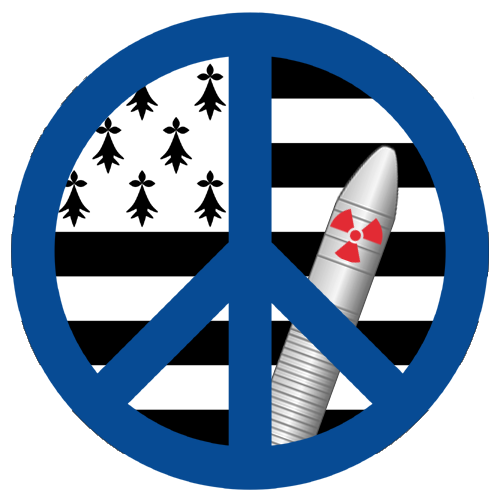 It is not surprising that the political community and civil society have little visibility on the nuclear issue, as even among researchers and other stakeholders there has been a marked absence of available literature, particularly on the issue of cost. Although the Natural Resources Defense Council (NRDC) in Washington has to date published five volumes in the collection 'The Nuclear Weapons Databook' (cf. Stan Norris, 1994), most books or studies on the subject of nuclear disarmament usually avoid addressing the financial dimension of the nuclear issue. The 231-page report, Weapons of Terror: Freeing the World of Nuclear, Biological and Chemical Arms (June 2006), produced by the Independent Weapons of Mass Destruction Commission and known as the Blix Report (Hans Blix chaired the Commission), urges the international community "to study the report and consider its 60 recommendations" on what the international community can and should do. However, the Blix Report makes no mention of the financial implications of the measures proposed.
It is not surprising that the political community and civil society have little visibility on the nuclear issue, as even among researchers and other stakeholders there has been a marked absence of available literature, particularly on the issue of cost. Although the Natural Resources Defense Council (NRDC) in Washington has to date published five volumes in the collection 'The Nuclear Weapons Databook' (cf. Stan Norris, 1994), most books or studies on the subject of nuclear disarmament usually avoid addressing the financial dimension of the nuclear issue. The 231-page report, Weapons of Terror: Freeing the World of Nuclear, Biological and Chemical Arms (June 2006), produced by the Independent Weapons of Mass Destruction Commission and known as the Blix Report (Hans Blix chaired the Commission), urges the international community "to study the report and consider its 60 recommendations" on what the international community can and should do. However, the Blix Report makes no mention of the financial implications of the measures proposed.
From 1980 to 1987, Michael Randle was coordinator of the British Alternative Defence Commission. He contributed to two major publications, Defence Without the Bomb (Taylor and Francis, 1983) and The Politics of Alternative Defence (Paladin 1987). In the first one, which is relevant to our theme, the financial arguments against the bomb do not cover more than a page. The Canberra Commission's 1996 Report on the Elimination of Nuclear Weapons dedicates only four pages to the cost issue. A few individuals, such as Susan Willett, formerly Senior Fellow at the United Nations Institute for Disarmament Research (UNIDIR) and Michael Renner, Worldwatch Paper (1994), have tried to put focus on the cost issues.
 Fortunately, some publications have made valuable contributions to our understanding of the finances. Among them is the Atomic Audit, a major study costing out the entire U.S. nuclear adventure over 58 years, from 1945 until 1996, compiled by a team of ten researchers from the Brookings Institution headed by Stephen Schwartz. They accomplished what nobody else did before (cf. Atomic Audit, 1998). That team inspired a 360 page French study titled Audit Atomique. Le coût de l'arsenal nucléaire français. 1945-2010, published in Lyon, by the Centre de Documentation et de Recherches sur la Paix et les Conflits (CDRPC), which the author, Bruno Barrillot, founded in the 80's. Barrillot has been investigating nuclear expenditures over a forty-year period (1958-98). More recently we have seen Global Zero's Technical Report Nuclear Weapons Cost Study produced by co-founders Bruce G. Blair & Matthew A. Brown, in June 2011, and the report Nuclear Security Spending: Assessing Costs, Examining Priorities published by Carnegie Endowment for International Peace.
Fortunately, some publications have made valuable contributions to our understanding of the finances. Among them is the Atomic Audit, a major study costing out the entire U.S. nuclear adventure over 58 years, from 1945 until 1996, compiled by a team of ten researchers from the Brookings Institution headed by Stephen Schwartz. They accomplished what nobody else did before (cf. Atomic Audit, 1998). That team inspired a 360 page French study titled Audit Atomique. Le coût de l'arsenal nucléaire français. 1945-2010, published in Lyon, by the Centre de Documentation et de Recherches sur la Paix et les Conflits (CDRPC), which the author, Bruno Barrillot, founded in the 80's. Barrillot has been investigating nuclear expenditures over a forty-year period (1958-98). More recently we have seen Global Zero's Technical Report Nuclear Weapons Cost Study produced by co-founders Bruce G. Blair & Matthew A. Brown, in June 2011, and the report Nuclear Security Spending: Assessing Costs, Examining Priorities published by Carnegie Endowment for International Peace.
Concerning military expenditures as a whole, some institutes like Stockholm International Peace Research Institute (SIPRI) and the London-based International Institute for Strategic Studies (IISS), do publish extensive figures. These, along with the Congressional Research Service (CRS) are valuable and available resources i.e. SIPRI database
For obvious reasons, it is difficult to estimate the precise financial value of the international arms trade because statistics are often twisted or confidential; the same can be argued for nuclear trade. Like other prestigious institutes throughout the world, SIPRI recognises that there is a lack of detailed and consistent data on military spending which makes it hard to apply a common definition worldwide. In one of its latest edition, SIPRI experts explain that they have not included North Korea (DPRK) as a NWS because there is no available data. The country is suspected of having produced enough plutonium to manufacture some warheads but no public information enables SIPRI to verify if it really possesses any operational nuclear weapon. One could add that SIPRI's figures unfortunately do not include civil defence, demobilization, conversion and weapon destruction. The SIPRI Yearbook has no specific chapter on the nuclear weapons budgets of either the NWS or would-be NWS.
Disarmament advocates have their share of responsibility in the widespread ignorance about the inconvenient truths behind the bomb and its associated costs. Peter G Cohen, artist and writer, has been a student of nuclear weapons since creating materials for SANE's Ban the Bomb testing campaign in the 1950s. As an activist, he was a peace candidate for U.S. representative in the Lehigh Valley in 1968 and the director of the New Democratic Coalition of PA, 1969-'70. He is the author of nukefreeworld.com ; now lives in Santa Barbara, where he can be reached at <
Activists focusing on the detailed modalities of achieving the elimination or destruction of nuclear weapons tend to forget about the financial dimension of the issue, including the costs of dismantlement and cleaning-up nuclear sites. With the outstanding exception of the project Reaching Critical Will, an activity of the Women's International League for Peace and Freedom (WILPF) (who has published 'Assuring Destruction forever'), Anti-NATO activists in Europe have so far found it difficult to unearth and analyse Europe's financial contribution to the U.S. nuclear infrastructure on the European continent, although the number of NATO warheads has been investigated and widely publicised.
Anti-NATO activists in Europe have so far found it difficult to unearth and analyse Europe's financial contribution to the U.S. nuclear infrastructure on the European continent, although the number of NATO warheads has been investigated and widely publicised.
Does the general lack of debate on the costs of nuclear deterrence have a negative effect on public support for these policies? The question is a valid one : in 2008, - and probably since then), French authorities expressed worries that the lack of debate on nuclear deterrence could affect public support for its policies and that secrecy might be a handicap for promoting the 'force de frappe'. One could argue that a real debate could also jeopardise the credibility of French deterrence. For the time being, a majority of Nuclear Weapons States have made it quite impossible for the man-in-the-street to think the unthinkable. (to paraphrase Herman Kahn).
In the early 70s, there was widespread ecological awareness - as well as a political movement – of a need to constrain economic growth (spearheaded by the Club of Rome) but no equivalent to the slogan "Limits to military growth" has ever emerged in the world of disarmament except for the Nuclear Freeze Movement in the U.S.
B.C.
Extract from Nuclear Weapons, at what cost?
